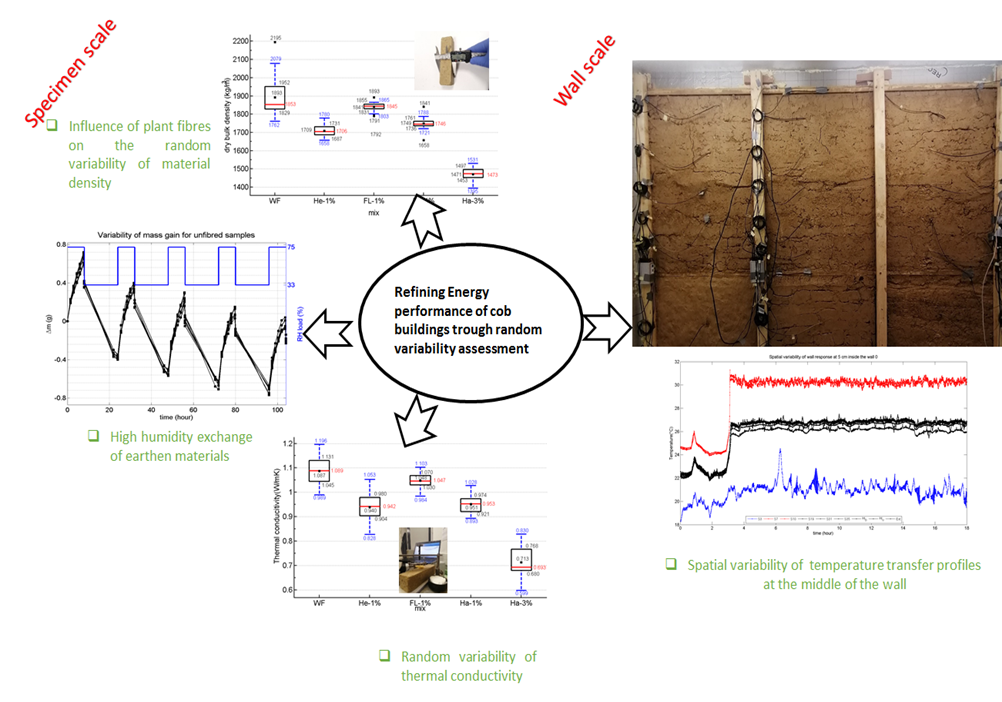Concerns about the environmental impact of works and structures are growing and underlie the current evolution of construction in terms of both energy savings and natural resources. For example, in 2016, GHG emissions related to energy consumption during the use phase of a building were 26% of national emissions and 45% of national energy consumption (1st consumer in France). Still in the field of building, the energy regulation sets objectives to reduce these impacts while maintaining good conditions of comfort and use of the works (winter comfort, summer comfort without recourse to air conditioning …).
The choice of materials and the composition of the structures allows to optimize the transfers of heat and humidity through the envelopes while limiting the consumption of natural resources. The use of new materials (bio-sourced, low-impact or functionalized) contributes to act on these different points. However, these new materials have a complex behavior with respect to hygrothermal transfers. Also, this behavior must be specified in order to evaluate the relevance of the use of these materials in the improvement of the insulation performances without degradation of their durability. Also, materials capable of storing heat offer new possibilities to control the distribution of thermal energy.
Three scales will be concerned:
- Material scale (microscopic) : Develop a better compromise of the material with respect to optimal thermo-hydric properties by taking into account the effect of the variability of the material properties on the response of the structure.
- Structure or work scale (macroscopic) : Calculate the energy performance of the system. For example, for buildings, the effect on the comfort of the users should be studied.
- Environment scale, especially urban (gigascopic) : the transition to this scale is also at the heart of the problem of the impact of choices at lower scales on the environment and the distribution of energy flows on a large scale.
- Study of the variability of raw earth constructions : experimental and numerical approach

© Junior Tchiotsop, Stéphanie Bonnet, Philippe Poullain, Nabil Issaadi


